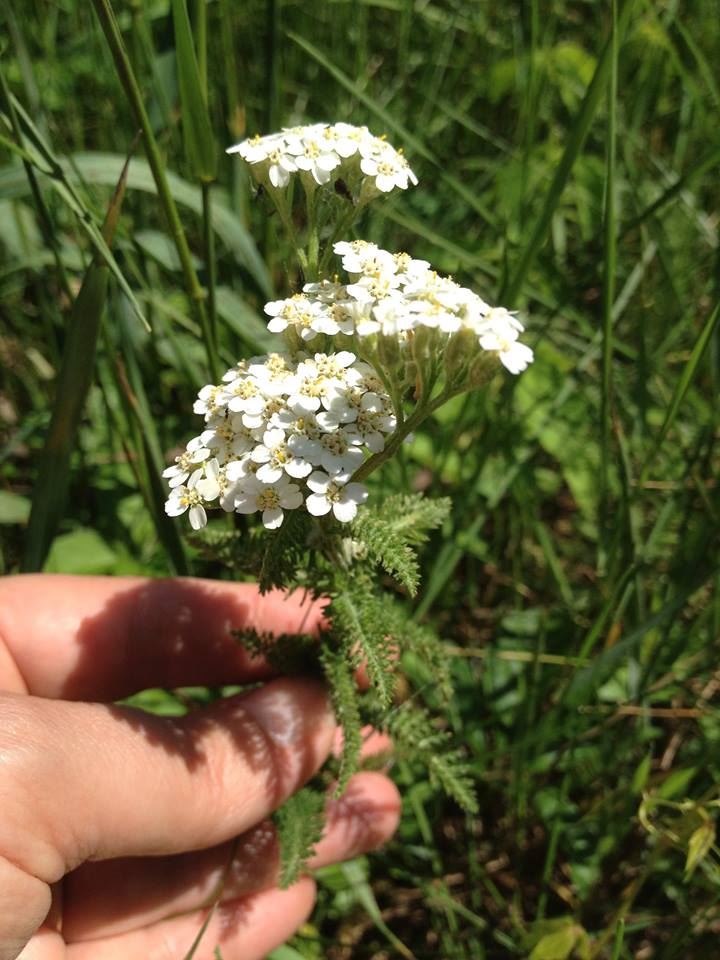
Look for yarrow growing in fields and meadows. Harvest only the wild white yarrow. And harvest on a sunny day, in the middle of the day if possible, so the yarrow is strongly scented. For tincture, the flowering tops are the best. (For salves, the larger, lower, basal leaves are preferred.)
I usually cut the top three or four inches of each yarrow plant, doing my best to allow the stalk to reflower by cutting just above a leaf node. I use the stalk, leaves, and flowers in my tincture.
Using scissors, I cut the yarrow stalks and flowers into pieces and fill a jar with them. Then I add 100 proof vodka right up to the top. Lid it tightly. Stick on a pretty label with at least the name of the plant and the date. And wait. The tincture is ready to use in six weeks.
I spray yarrow tincture on my ankles to repel ticks.
I spray it all over myself to repel mosquitoes.
I spray yarrow tincture on wounds and bug bites.
I spray it on my toothbrush and use it as a deodorant.
Yarrow tincture has many more uses. How will you use yours?
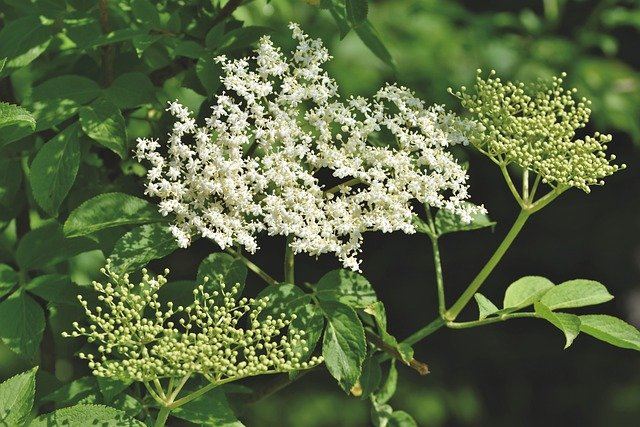
Elder (Sambucus canadensis)
There is a woman who lives in the elder tree. She is called Elda Mohr by some. Ask her permission before harvesting any part of the elder and your medicine will be helpful. Ignore her, so the tales go, and your medicine may poison you! The flowers and berries are strong medicines, yet safe enough for infants. Tincture of the flowers yields a remedy that gently lowers a fever, preventing convulsions in the wee ones. The berries (which will come later in the year) not only make a great wine and a fabulous jam, they are anti-viral when tinctured. A great ally to have on hand to deal with colds and the flu. Elderflower champagne may have medicinal benefits, too, but I make it mostly because it tastes so good.
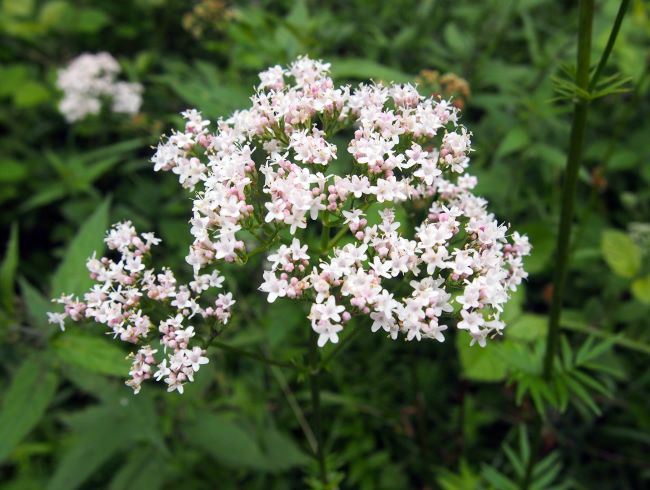 Valerian (Valeriana officinalis)
Valerian (Valeriana officinalis)
The root of this perennial plant is famous as an aid for those who can't sleep. I personally find it overpowering; like a kick to the head. And as many as a third of those who take valerian root find themselves stimulated rather than sedated. So I tincture the flowers instead. They are softer and smoother; inviting sleep rather than knocking one out. Surprisingly, the fresh root is odorless. The stink of the dried root is caused by the break down of the active constituents. Consider growing some, if only to enjoy the butterflies who adore it.
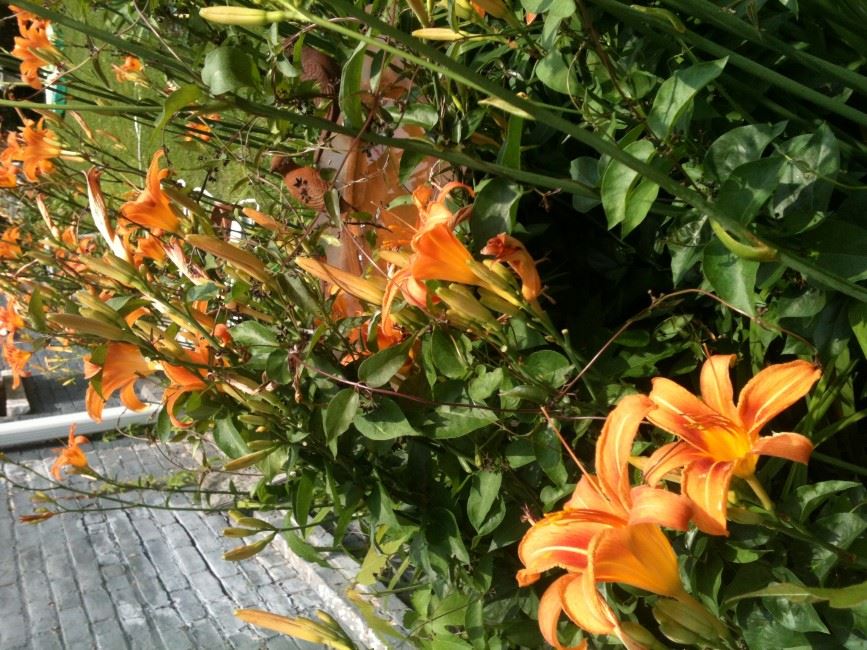 Day lily (Hemerocallis fulva)
Day lily (Hemerocallis fulva)
This showy roadside weed is one of the first edible weeds I put in my salad. There is no mistaking the bright orange flowers! (All upward-facing lilies are safe to eat, no matter what their color. Lilies that face out or down are not safe to eat.) In China, day lilies are dried and added to soups and other foods. Euell Gibbons dipped the flowers in batter and fried them. The blossoms, harvested early in the morning, just before they open, are considered a specific remedy for women with a genetic disposition toward breast cancer.
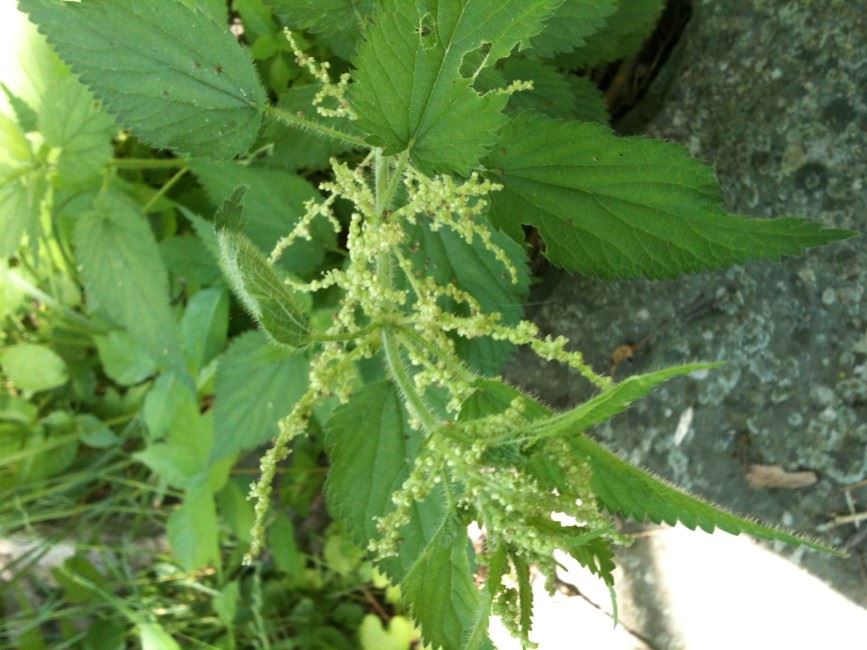 Nettle (Urtica dioica)
Nettle (Urtica dioica)
Uh-oh! Here's nettle in flower. Too late now to harvest it for drying or eating. The only reactions reported from ingestion of nettle have occurred when the flowering plant has been consumed, so I stay away from it once flowers are visible. What can we do with flowering nettle? Wait; wait for the flowers to set seeds and for the seeds to ripen and then harvest the seeds. Or cut it and use it to make nettle rot fertilizer. Cover nettle stalks and leaves with cold water in a bucket, cover, and wait 3-6 weeks, or until it stinks. I use 1-3 cups of this diluted in a gallon of water to keep my gardens lush all summer.
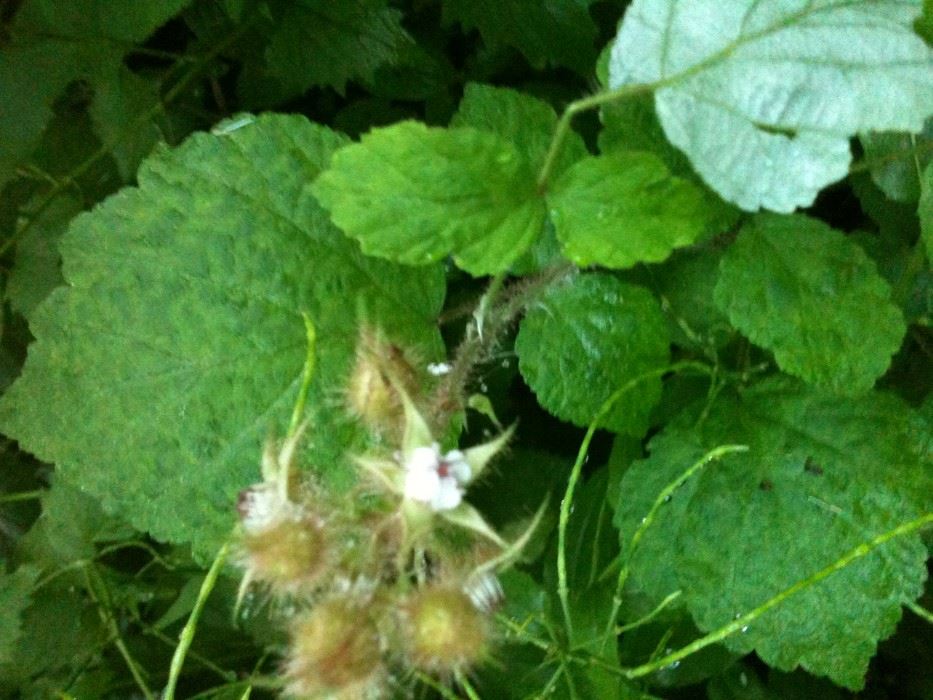 Raspberry (Rubus species)
Raspberry (Rubus species)
This photo is of a special local variety of raspberry that is incredibly delicious. Note that the back of the leaf is white. This is the easiest way to distinguish raspberry from blackberry; the color of the berries can be confusing, for there are red blackberries and black raspberries as well as black blackberries and red raspberries (and golden raspberries, too). As with the nettle, once the raspberry is flowering, I stop harvesting. Second-year canes bear fruit, so are not ideal for medicine, and the first year canes, which are the best for drying, need to gather energy now so they can fruit next year.
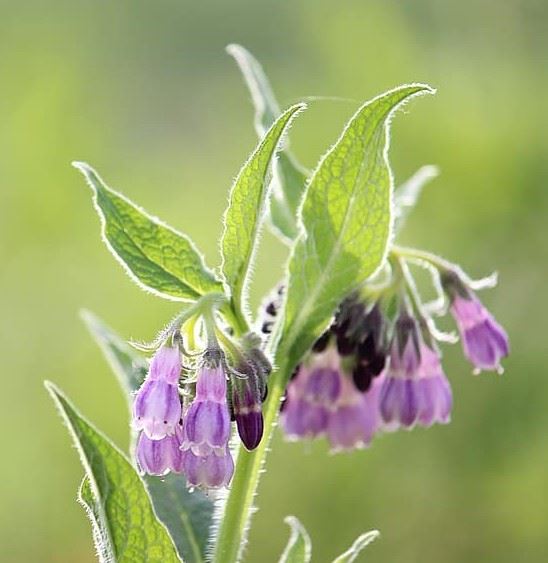 Comfrey (Symphytum uplandica x)
Comfrey (Symphytum uplandica x)
Here are the beautiful flowers of garden comfrey, the one that is safe to use. Wild comfrey, which does not occur in North America, has yellow flowers and is a smaller plant. Henry Doubleday, an Englishman, hybridized "blue comfrey," also known as Siberian comfrey, to remove the problematic, liver-disturbing alkaloids found in the wild comfrey. I have drunk comfrey infusion (mostly from comfrey that I have purchased from herbal suppliers) for over thirty years with no ill effects. My sweetheart, who drinks twice as much comfrey infusion as I do, was declared very healthy on a recent liver function test. (Which was done as standard procedure, not because there seemed to be a problem). To harvest: I cut entire flowering stalks of garden comfrey near the ground and hang them individually to dry. The stalk is especially rich in alantoin, a healing alkaloid.
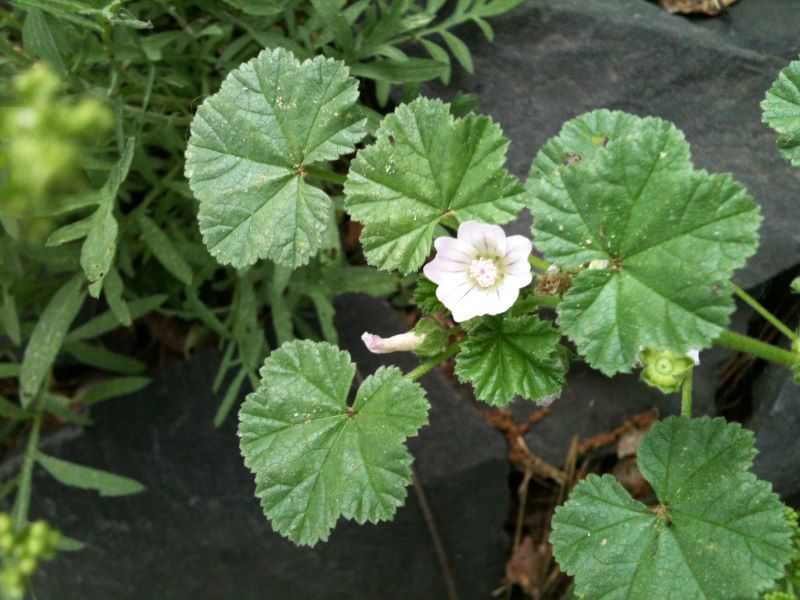
Malva leaves, flowers, and seed pods (Malva neglecta)
This mallow is prostrate and so often overlooked. All parts of it are delicious in salads: leaves, flowers, and seeds. The seeds look like a little gouda cheese, thus giving the plant its common name: cheeses. All members of malva family are edible, including hibiscus, rose of Sharon (Northern hibiscus), hollyhocks, and the numerous cultivars that are available.
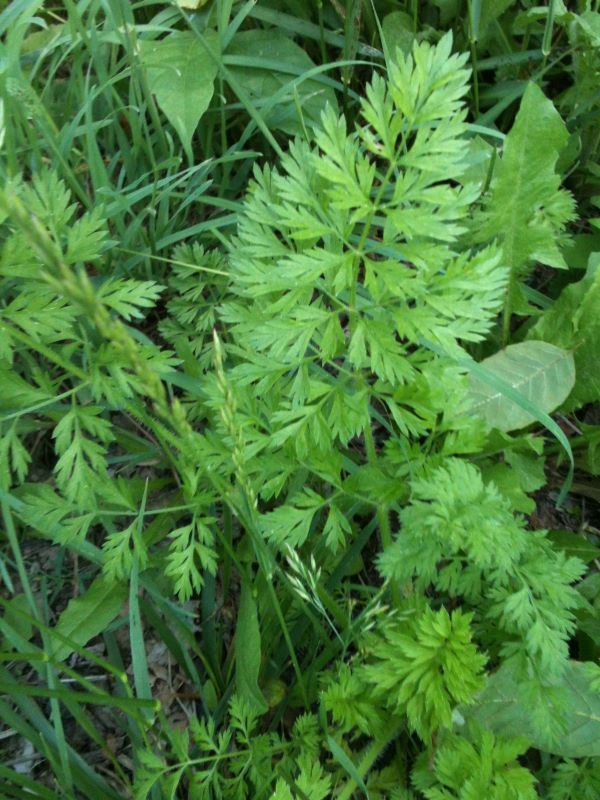
Carrot leaves (Daucus carota)
The scent of carrot is unmistakable in the leaves of wild carrot or Queen Anne's lace, so we need not worry that we will mistake it for its poisonous sisters like hemlock. Richer in potassium than bananas, wild carrot leaflets are tasty in summer salads. (I don't use the heavy midrib.) And, of course, when they bloom, the flowers go in my salads too.
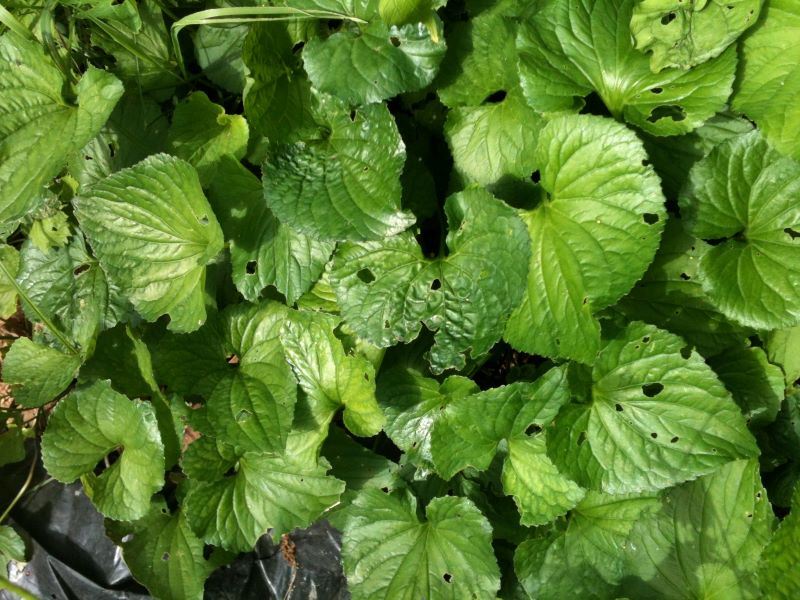
Violet leaves (Viola species)
The violet leaves are big and glossy now and super rich in vitamins, especially the carotenes which are converted to vitamin A in the body. Violet is considered one of the best sources of vitamin A among the herbs. If you are drying leaves for infusion, now is the time to pick them. Violet leaf infusion used to be one of my mainstays, until the price got too pricey. It is a proven cancer preventative and curative in some cases.
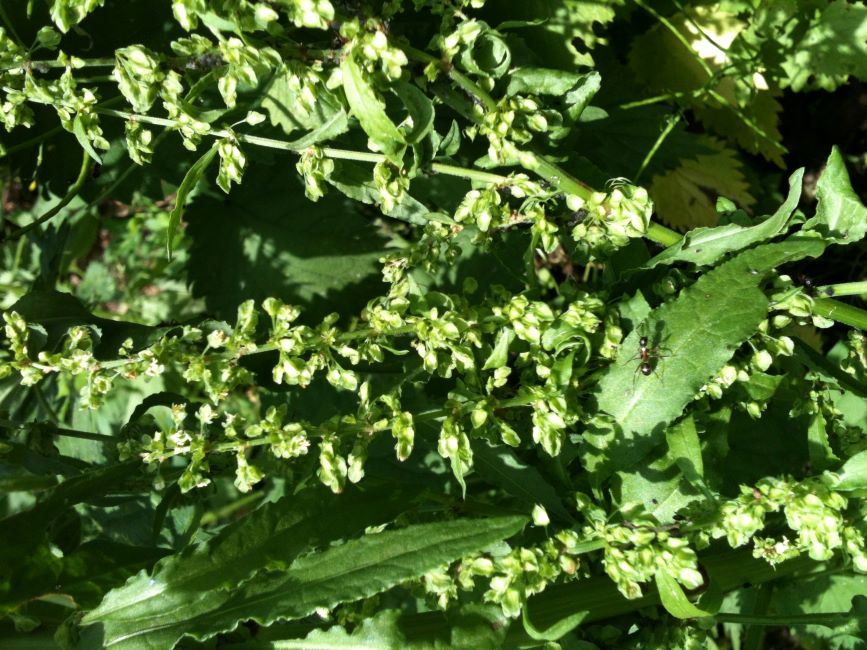
Yellow dock leaves (Rumex crispus)
Can you see those little leaves peeking out from the green flowers? They are slightly sour and slightly bitter and altogether delish in salads. Be sure to get the ones from the curly dock (R. crispus); the leaves of the more common broad dock (R. obtusifolia) are way too bitter for my taste buds. Both of them are yellow dock and their roots are used interchangeably.

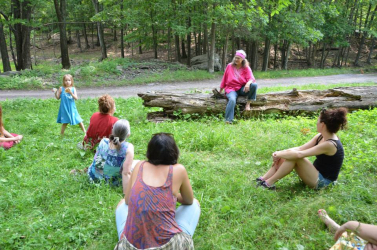 The Wise Woman Center exists to re-weave the healing cloak of the Ancients. This land is sacred, it is a safe space for women, and a place for the teachings of the Wise Woman way. The Goddess lives here, as do goats, fairies, green witches, and elders.
The Wise Woman Center exists to re-weave the healing cloak of the Ancients. This land is sacred, it is a safe space for women, and a place for the teachings of the Wise Woman way. The Goddess lives here, as do goats, fairies, green witches, and elders.

 Valerian (Valeriana officinalis)
Valerian (Valeriana officinalis)







